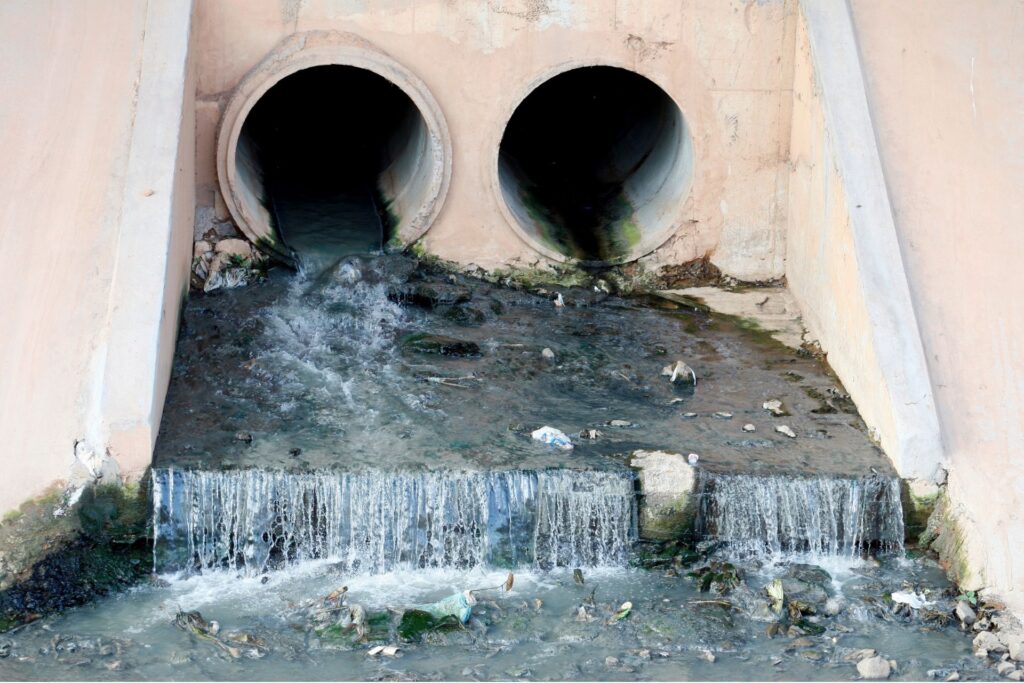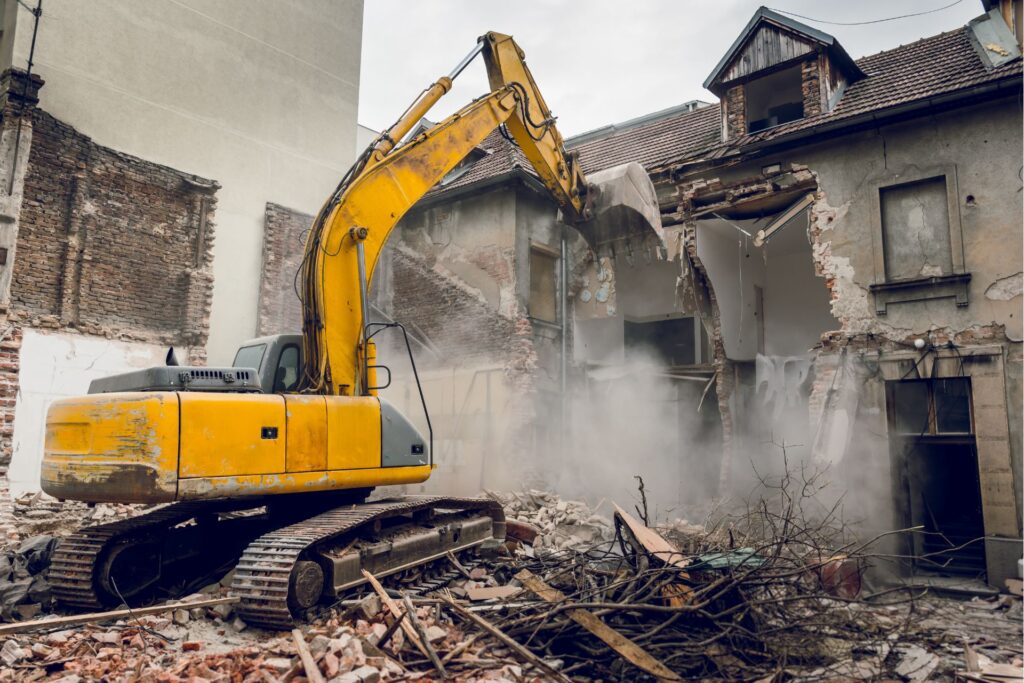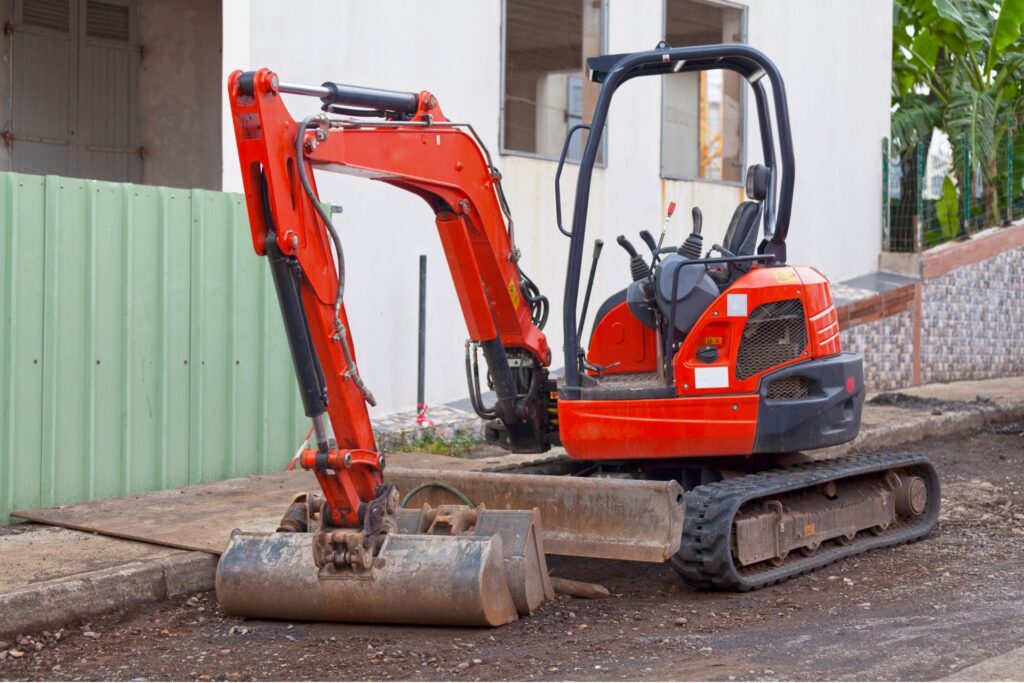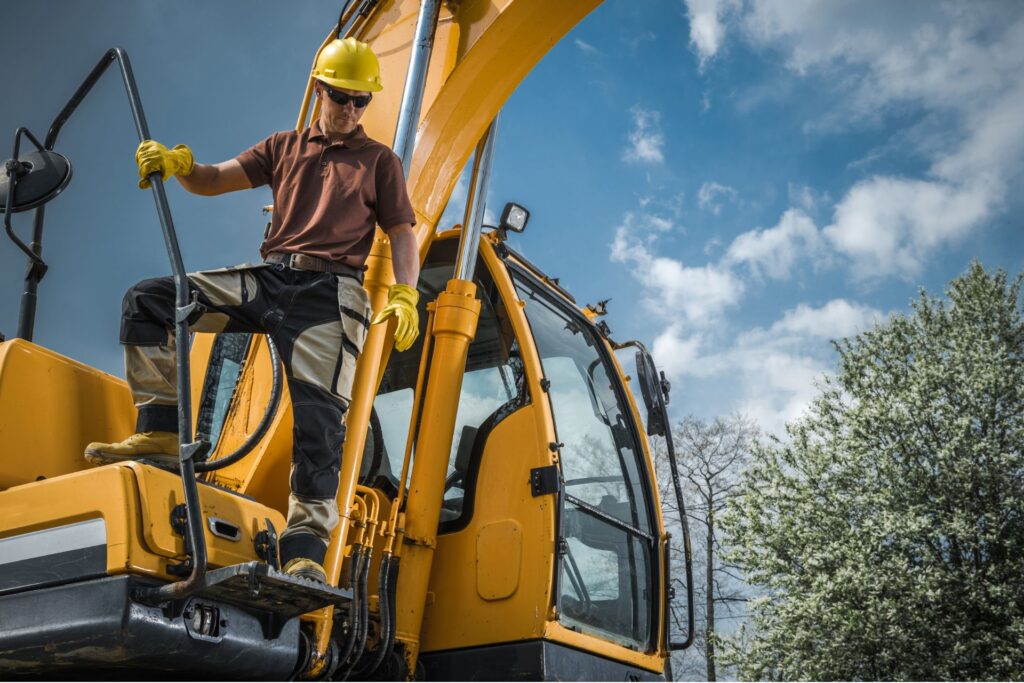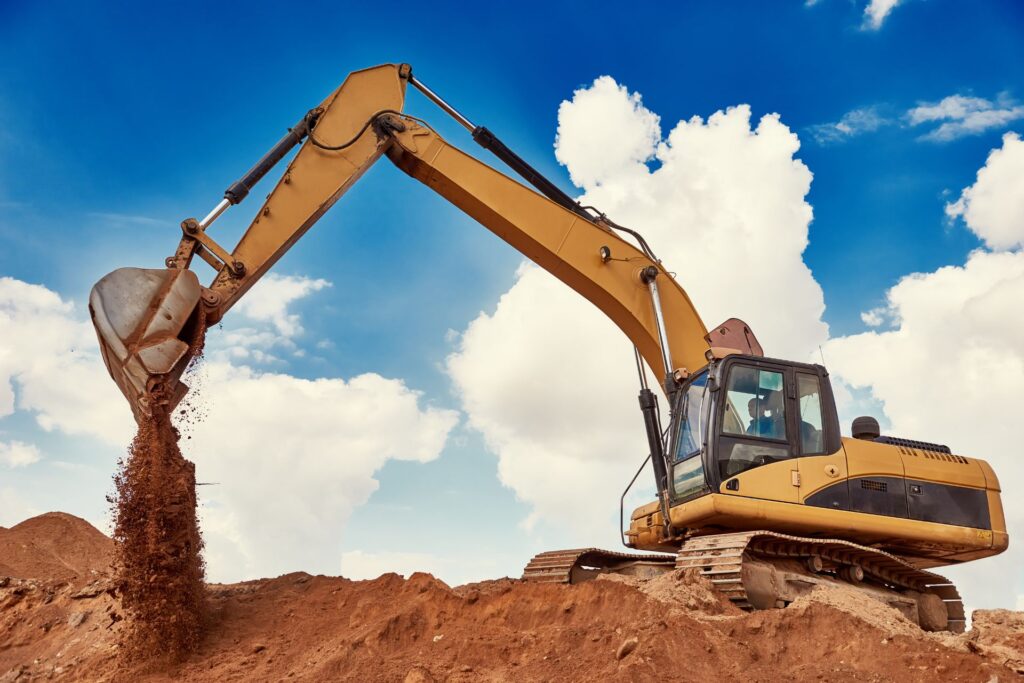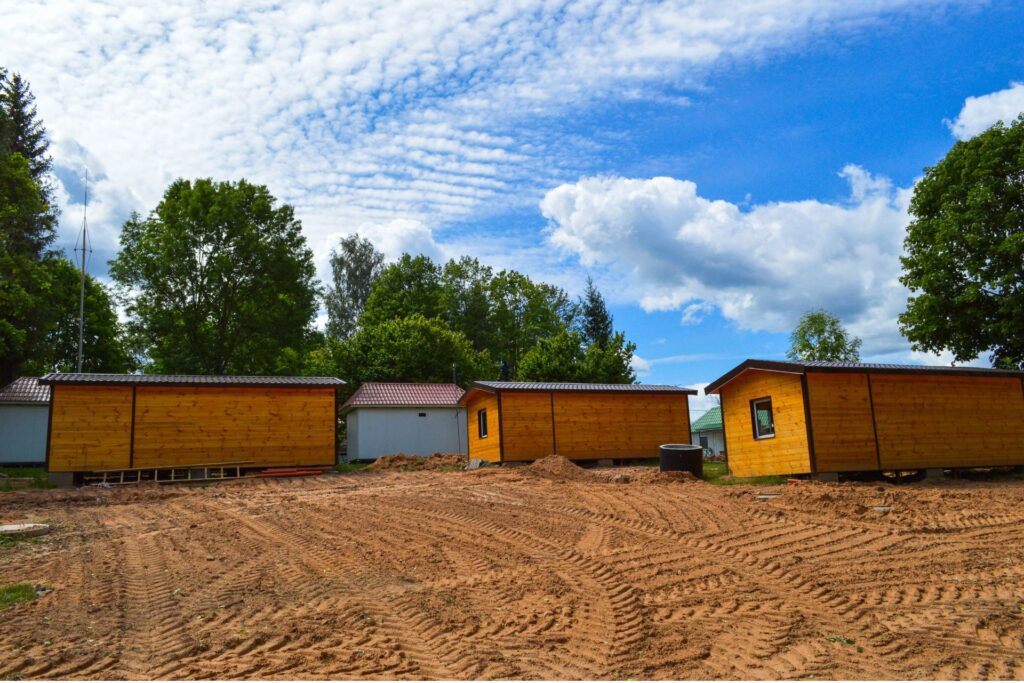Welcome to our comprehensive guide on understanding the difference between sewage and sewerage. In everyday conversations, these two terms are often used interchangeably, leading to confusion about their true meanings and functions. It’s crucial to grasp the distinction between them, as they play vital roles in public health and environmental protection. Sewage refers to the waste material from homes and businesses, including human waste and household wastewater, while sewerage denotes the system of pipes, pumps, and treatment facilities that manage and treat this waste. By the end of this article, you’ll have a clear understanding of what sewage and sewerage are, how they differ, and why both are essential to our daily lives.
Sewage refers to the waste material, including human waste and household wastewater, that comes from homes and businesses. Sewerage, on the other hand, is the system of pipes, pumps, and treatment facilities designed to transport and treat sewage. In essence, sewage is the waste itself, while sewerage is the infrastructure that manages and processes this waste to protect public health and the environment.
- Defining Sewage
- Defining Sewerage
- Key Differences Between Sewage And Sewerage
- How Sewage Is Treated
- The Role Of Sewerage Systems In Urban Infrastructure
- Common Issues And Challenges
- Innovations And Future Trends
- Public Awareness And Education
- FAQs: About What Is The Difference Between Sewage And Sewerage
- Conclusion
Defining Sewage
What is Sewage?
Sewage is a broad term that encompasses a variety of waste products transported through a sewer system. At its core, sewage includes human waste such as urine and feces, but it doesn’t stop there. The composition of sewage extends to household waste like food scraps, paper products, and various other forms of debris that make their way into the sewer from sinks, toilets, and drains.
Sources of Sewage
Understanding the sources of sewage is crucial in grasping the broader picture of wastewater management. Primarily, sewage originates from residential homes where daily activities like bathing, cooking, and cleaning produce waste that flows into the sewer system. Additionally, businesses contribute to sewage, particularly industries that use large amounts of water and produce chemical byproducts. Another significant source is stormwater runoff, which occurs when rainwater washes over streets, rooftops, and other surfaces, picking up pollutants before entering the sewer system.
By recognizing these various sources, we can better appreciate the complexity of sewage composition and the challenges associated with its treatment and disposal.

Defining Sewerage
What is Sewerage?
Sewerage is an essential part of urban infrastructure, ensuring that waste and wastewater are efficiently transported and treated to protect public health and the environment. At its core, sewerage refers to the network of pipes, pumps, and treatment facilities designed to manage and process sewage.
Definition
Sewerage is a comprehensive system that collects, transports, and treats wastewater from residential, commercial, and industrial sources. This intricate network plays a crucial role in maintaining sanitary conditions in urban and rural areas alike. Without an effective sewerage system, communities would face significant health risks due to the accumulation of untreated waste.
Components of Sewerage
A sewerage system is more than just a collection of pipes; it involves several key components that work together seamlessly to manage wastewater. Let’s break down these components:
1. Pipes: These are the primary conduits that carry wastewater from homes and businesses to treatment facilities. Pipes come in various sizes and materials, including PVC, concrete, and cast iron, each suited for different aspects of the sewerage system.
2. Manholes: Manholes are access points that allow for the inspection, maintenance, and cleaning of the sewerage system. They are strategically placed along the network to ensure that any blockages or issues can be quickly identified and resolved.
3. Pumps: In areas where gravity alone cannot move wastewater to the treatment plants, pumps are used to lift and transport it. Pump stations are critical in maintaining the flow and preventing backups in the system.
4. Treatment Plants: Once the wastewater reaches its destination, treatment plants take over. These facilities are designed to remove contaminants and purify the water before it is released back into the environment. Treatment processes typically include physical, chemical, and biological methods to ensure that the water is safe and clean.
Understanding sewerage is vital for appreciating how modern cities manage waste and protect their populations. By ensuring that each component of the sewerage system is well-maintained and functioning correctly, communities can enjoy a higher standard of public health and environmental quality.
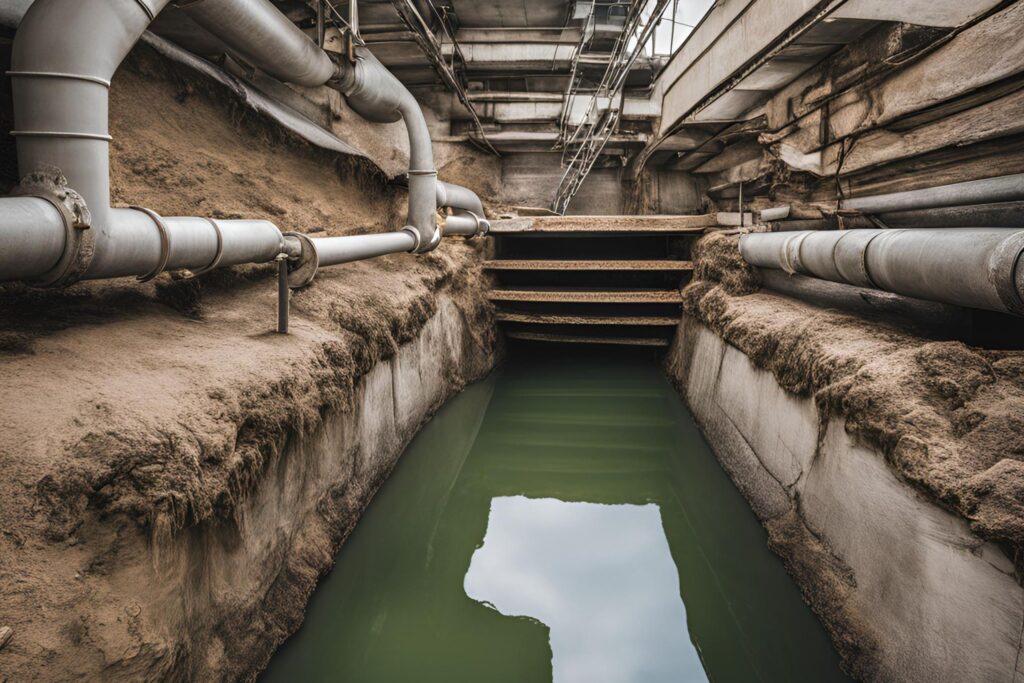
Key Differences Between Sewage And Sewerage
Understanding the distinction between sewage and sewerage is crucial for anyone interested in environmental health and urban infrastructure. Though the terms are often used interchangeably, they refer to different aspects of waste management. Let’s delve into the key differences between these two concepts, breaking down their unique roles and significance.
Conceptual Differences
- Sewage: Sewage refers to the waste material itself. It is the wastewater that flows from homes, industries, and businesses into the sewer systems. This waste includes human excrement, household waste, and industrial effluents. Essentially, sewage is what we flush down toilets, drain from sinks, and discard through various other waste outlets.
- Sewerage: In contrast, sewerage is the entire system designed to manage this waste. It encompasses the network of pipes, pumps, and treatment facilities that collect, transport, and treat sewage. Sewerage is the infrastructure that ensures sewage is efficiently moved from its source to treatment plants, where it can be processed and safely released into the environment.
Functional Differences
- Sewage: When we talk about sewage, we focus on the substance being transported. It’s about the actual waste material, which can contain harmful pathogens and pollutants. The primary concern with sewage is its composition and the potential hazards it poses to human health and the environment if not properly managed.
- Sewerage: Sewerage, on the other hand, is concerned with the systems and processes involved in the transportation and treatment of sewage. This includes everything from the design and maintenance of sewer lines to the operation of treatment facilities. The focus is on ensuring that sewage is effectively collected and treated to minimize environmental impact and protect public health.
Importance of Each
- Sewage: The importance of properly managing sewage cannot be overstated. Untreated or inadequately treated sewage can lead to serious health issues, including waterborne diseases such as cholera and dysentery. Additionally, sewage can contaminate natural water bodies, causing significant harm to aquatic life and ecosystems. Effective sewage management is critical to maintaining clean and safe environments.
- Sewerage: Sewerage systems play a vital role in managing sewage. Without an efficient sewerage system, managing the vast amounts of waste produced daily would be impossible. Sewerage infrastructure helps prevent the spread of diseases, protects water quality, and supports urban development by providing a reliable means of waste disposal. It ensures that sewage is transported to treatment plants where it can be processed and made safe before being released into the environment.
In conclusion, while sewage and sewerage are closely related, they represent different aspects of waste management. Sewage is the waste material that needs to be managed, while sewerage is the infrastructure that makes this management possible. Both are essential for maintaining public health and environmental quality. Understanding these differences helps in appreciate the complexity and importance of waste management systems in our daily lives.

How Sewage Is Treated
Initial Collection
Sewage treatment begins with the initial collection stage. Wastewater is collected from various sources, including residential homes, commercial buildings, and industrial facilities. This is achieved through an extensive network of pipes and sewers that transport the sewage to a treatment facility. In some areas, combined sewer systems collect both sewage and stormwater runoff, which can lead to additional challenges during heavy rainfall.
Treatment Process
Primary Treatment
The first step in the treatment process is primary treatment, which focuses on removing large physical particles from the sewage. This is done through physical processes such as screening and sedimentation. During screening, large objects like sticks, rags, and other debris are removed using screens or filters. Following this, the wastewater moves into sedimentation tanks where heavier solids settle at the bottom and are collected as sludge. This stage is crucial for reducing the load on subsequent treatment processes.
Secondary Treatment
After primary treatment, the sewage undergoes secondary treatment, which involves biological processes to break down organic matter. This is typically achieved through the use of microorganisms that consume and decompose organic pollutants. One common method is the activated sludge process, where sewage is mixed with a small amount of sludge loaded with bacteria. The mixture is aerated to encourage bacterial growth and activity. The bacteria consume the organic matter, and the treated water is then separated from the sludge. This step significantly reduces the levels of organic pollutants and nutrients in the wastewater.
Tertiary Treatment
Tertiary treatment is the final stage of sewage treatment and involves additional purification steps to ensure the treated water meets safety standards. This can include various processes such as filtration, where remaining solids and fine particles are removed, and disinfection, where harmful pathogens are eliminated. Common disinfection methods include chlorination, ultraviolet (UV) light, and ozone treatment. In some cases, advanced methods like membrane filtration or reverse osmosis are used to remove dissolved substances and contaminants, ensuring the treated water is of high quality.
Disposal or Reuse
Once the sewage has been thoroughly treated, it must be either disposed of or reused in a safe and environmentally friendly manner. Treated sewage, often referred to as effluent, is commonly discharged into natural water bodies like rivers, lakes, or oceans, where it undergoes further natural purification. However, increasing emphasis is being placed on the reuse of treated sewage, particularly in regions facing water scarcity. Treated effluent can be reused for various purposes such as agricultural irrigation, landscape watering, industrial processes, and even as a source of drinking water after further purification. Reusing treated sewage not only conserves water resources but also reduces the environmental impact of wastewater disposal.
By understanding and optimizing each stage of the sewage treatment process, we can ensure that wastewater is managed efficiently and sustainably, protecting public health and the environment.
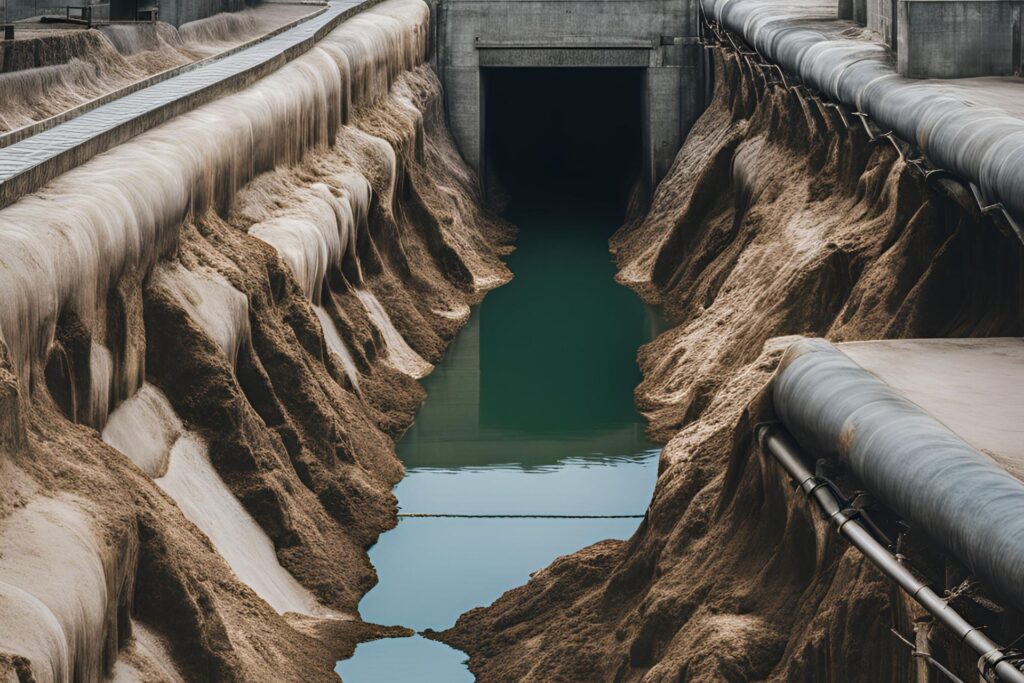
The Role Of Sewerage Systems In Urban Infrastructure
Historical Development
The history of sewerage systems is a fascinating journey through time, illustrating humanity’s evolving approach to sanitation and public health. Ancient civilizations like the Indus Valley and Mesopotamia were pioneers in this field, creating rudimentary yet effective drainage systems as early as 4000 BCE. These early systems primarily relied on gravity to move wastewater away from populated areas, a principle that still underpins modern sewerage systems.
In ancient Rome, the Cloaca Maxima, one of the world’s earliest known sewer systems, was built around 600 BCE. This impressive structure was primarily designed to drain local marshes and remove waste from the city. The Romans’ advanced engineering skills allowed them to create extensive sewer networks that significantly improved urban hygiene and public health.
The Middle Ages saw a decline in sophisticated sewerage systems in Europe, leading to frequent outbreaks of diseases like cholera and the plague. It wasn’t until the 19th century, during the Industrial Revolution, that modern sewerage systems began to emerge. The rapid urbanization and industrialization of this period necessitated more effective waste management solutions. Visionaries like Sir Joseph Bazalgette in London revolutionized urban sanitation with the construction of comprehensive sewer networks, drastically reducing waterborne diseases.
Modern Sewerage Systems
Today’s sewerage systems are marvels of engineering, designed to efficiently manage and treat vast amounts of wastewater. These systems consist of several key components:
1. Collection Systems: These include a network of pipes, manholes, and pumping stations that transport wastewater from homes, businesses, and industries to treatment facilities. Gravity sewers are common, but in areas where topography doesn’t allow for gravity flow, pumping stations lift the sewage to higher elevations.
2. Treatment Plants: Once collected, wastewater is transported to treatment plants where it undergoes various processes to remove contaminants. Primary treatment involves physical processes like screening and sedimentation to remove large particles. Secondary treatment employs biological processes to degrade organic matter, while tertiary treatment includes advanced filtration and disinfection to remove remaining impurities and pathogens.
3. Discharge Systems: Treated water is then safely discharged into natural water bodies or reused for purposes like irrigation or industrial processes. In many modern systems, the treated effluent is of such high quality that it poses no harm to the environment.
Modern sewerage systems are designed with sustainability and resilience in mind. They incorporate advanced technologies for monitoring and control, ensuring that they operate efficiently and adapt to changing conditions. For instance, smart sensors can detect blockages or leaks, allowing for timely maintenance and reducing the risk of system failures.
Maintenance and Upgrades
Maintaining and upgrading sewerage systems is crucial for preventing failures that can have catastrophic consequences for public health and the environment. Regular maintenance ensures that all components of the system function properly and efficiently. This includes cleaning pipes to remove blockages, inspecting and repairing manholes, and maintaining pumping stations.
Upgrading sewerage systems is equally important to address the challenges posed by urban growth, climate change, and aging infrastructure. Many cities are investing in infrastructure renewal projects to replace outdated pipes, expand treatment capacity, and incorporate green technologies. For example, the implementation of green infrastructure, such as permeable pavements and green roofs, can reduce the volume of stormwater entering the sewer system, mitigating the risk of overflows during heavy rain events.
Advancements in technology also play a significant role in the modernization of sewerage systems. Innovations like trenchless technology allow for the repair and replacement of pipes without extensive excavation, minimizing disruption to urban areas. Additionally, the integration of data analytics and predictive maintenance strategies helps utilities to identify potential issues before they become critical problems, ensuring the long-term reliability of the sewerage network.
In conclusion, sewerage systems are vital components of urban infrastructure, evolving from ancient drainage methods to sophisticated networks that protect public health and the environment. Their historical development, modern functionality, and the necessity for regular maintenance and upgrades highlight their importance in supporting sustainable urban living. By continuing to invest in and innovate these systems, cities can ensure that they remain resilient and effective in the face of growing urbanization and environmental challenges.

Common Issues And Challenges
When it comes to sewage and sewerage systems, several common issues and challenges need to be addressed to ensure efficient operation and environmental safety. Let’s dive into some of these critical problems.
Sewage Overflows and Spills
Causes and Consequences of Sewage Spills
Sewage overflows and spills are significant problems that can arise in any sewerage system. They occur when the system is overwhelmed or fails due to various reasons. Heavy rainfall, blockages, equipment failures, and aging infrastructure are common culprits. When excessive rainwater enters the sewer system, it can exceed the capacity of the pipes and treatment plants, leading to overflows. Blockages caused by debris, fats, oils, and grease can also cause backups and spills.
The consequences of these spills are far-reaching. They can lead to contamination of water bodies, posing serious health risks to humans and wildlife. Pollutants such as bacteria, viruses, and harmful chemicals can spread, leading to outbreaks of diseases like gastroenteritis and hepatitis. Additionally, sewage spills can damage property, degrade water quality, and result in significant cleanup costs. Addressing these issues promptly is crucial to minimizing their impact.
Aging Infrastructure
Challenges Posed by Old Sewerage Systems
Many cities around the world are grappling with the challenges posed by aging sewerage infrastructure. As these systems age, they become more prone to failures, leaks, and inefficiencies. Old pipes made of materials like clay, cast iron, or concrete can crack, corrode, and collapse over time. This deterioration leads to increased maintenance costs, frequent repairs, and a higher risk of system failures.
Moreover, outdated sewerage systems may not be equipped to handle modern demands. Population growth, urbanization, and increased water usage put additional strain on these aging networks. As a result, cities may experience more frequent sewage overflows, backups, and service disruptions. Upgrading and modernizing these systems require significant investment, but it is essential to ensure reliable and efficient sewage management in the future.
Environmental Impact
Potential Environmental Issues Related to Sewage and Sewerage Systems:
Sewage and sewerage systems have a profound impact on the environment. When these systems fail or are not properly maintained, they can lead to several environmental issues. One of the most significant concerns is the contamination of water bodies. Sewage spills and overflows can introduce harmful pollutants, including pathogens, nutrients, and chemicals, into rivers, lakes, and oceans. This pollution can harm aquatic ecosystems, kill fish and other wildlife, and disrupt the balance of natural habitats.
Additionally, untreated or inadequately treated sewage can contribute to the eutrophication of water bodies. Excessive nutrients, such as nitrogen and phosphorus, can lead to the overgrowth of algae, resulting in oxygen depletion and the death of aquatic organisms. This process, known as algal blooms, can create “dead zones” where life cannot thrive.
The environmental impact extends beyond water bodies. Sewage can also contaminate soil and groundwater, affecting agriculture and drinking water sources. Moreover, the greenhouse gas emissions associated with sewage treatment and transportation contribute to climate change. Therefore, addressing the environmental challenges related to sewage and sewerage systems is vital for protecting our planet and ensuring sustainable development.
In conclusion, understanding and addressing the common issues and challenges of sewage and sewerage systems are crucial for safeguarding public health, protecting the environment, and ensuring the reliability of these essential infrastructures. By investing in modernizing and maintaining these systems, we can mitigate the risks associated with sewage overflows, aging infrastructure, and environmental impacts, paving the way for a cleaner and healthier future.

Innovations And Future Trends
Technological Advances
The landscape of sewage treatment and sewerage systems is rapidly evolving, thanks to groundbreaking technological advances. One of the most significant developments is the introduction of advanced biological treatment processes. These processes utilize microorganisms to break down organic matter more efficiently, reducing the need for chemical treatments and minimizing environmental impact. Additionally, membrane bioreactors (MBRs) are gaining popularity for their ability to filter contaminants at a microscopic level, ensuring cleaner effluent.
Another exciting technological innovation is the use of smart sensors and IoT (Internet of Things) devices in sewage systems. These sensors can monitor various parameters, such as flow rate, temperature, and contaminant levels in real time. This data enables operators to optimize the treatment process, detect issues early, and ensure compliance with environmental regulations. The integration of AI and machine learning in these systems further enhances their efficiency by predicting maintenance needs and optimizing operational parameters.
Sustainable Practices
As environmental concerns continue to grow, there is a strong push towards adopting sustainable practices in sewage management. One such practice is the implementation of green infrastructure. This involves using natural processes to manage and treat stormwater, reducing the burden on traditional sewage systems. Green roofs, rain gardens, and permeable pavements are examples of green infrastructure that can absorb and filter rainwater, reducing runoff and preventing sewage overflows.
Another sustainable approach is the recovery and reuse of resources from sewage. Technologies such as anaerobic digestion can convert sewage sludge into biogas, which can be used to generate electricity or heat. Additionally, the nutrient-rich byproducts of sewage treatment can be used as fertilizers in agriculture, closing the loop and promoting a circular economy.
Water conservation efforts also play a crucial role in sustainable sewage management. By reducing water consumption through efficient fixtures and appliances, we can decrease the volume of sewage generated. This not only eases the burden on treatment plants but also conserves a precious resource.
Future Outlook
Looking ahead, the future of sewage and sewerage systems is poised for transformative changes. One key trend is the increasing adoption of decentralized sewage treatment systems. These systems treat sewage close to its source, reducing the need for extensive sewer networks and minimizing the risk of contamination. Decentralized systems are particularly beneficial in rural or remote areas where traditional infrastructure may be impractical.
Another future trend is the integration of renewable energy sources into sewage treatment processes. Solar panels and wind turbines can provide clean energy to power treatment plants, reducing their carbon footprint. Additionally, advancements in energy-efficient technologies will further reduce the energy consumption of these facilities.
Predictive analytics and AI will continue to play a pivotal role in the future of sewage management. These technologies can analyze vast amounts of data to predict trends, optimize operations, and prevent system failures. For instance, AI algorithms can forecast heavy rainfall events and adjust sewage treatment processes accordingly to prevent overflows.
In conclusion, the future of sewage and sewerage systems is bright, with numerous technological advancements and sustainable practices paving the way for a cleaner, more efficient, and environmentally friendly approach to sewage management. By embracing these innovations, we can ensure a healthier future for our communities and the planet.

Public Awareness And Education
Importance of Public Knowledge
Understanding the distinction between sewage and sewerage is crucial for the public. Sewage refers to the waste matter that passes through sewers, including everything from household wastewater to industrial effluents. On the other hand, sewerage encompasses the infrastructure—pipes, pumps, and treatment facilities—designed to manage and treat this waste. When the public grasp these differences, they become more aware of the processes involved in waste management and the importance of maintaining these systems.
An informed public is better equipped to support initiatives that protect and improve sewerage systems. Knowledge about how sewage is treated and managed can lead to more responsible behavior, such as proper disposal of waste and reduced use of harmful substances that can damage the sewerage infrastructure. Furthermore, awareness can drive public support for necessary funding and policies aimed at upgrading and maintaining sewerage systems, ensuring they are efficient and environmentally friendly.
Community Involvement
Community involvement plays a pivotal role in the upkeep and enhancement of local sewerage systems. Communities can participate in various ways, from volunteering for local clean-up efforts to advocating for better waste management practices and infrastructure investments. By engaging in community activities, residents can help reduce the burden on sewerage systems and prevent blockages and other issues caused by improper waste disposal.
Moreover, local governments and organizations can facilitate community involvement by organizing events and initiatives that encourage public participation. These might include neighborhood clean-ups, educational workshops, and public forums where residents can voice their concerns and suggestions regarding sewerage management. When communities come together to address these issues, they not only improve their local environment but also foster a sense of collective responsibility and pride in their surroundings.
Educational Programs
Educational programs are instrumental in raising public awareness and promoting responsible behavior regarding sewerage systems. Successful programs often involve a combination of informational campaigns, school curriculums, and hands-on activities that teach both children and adults about the importance of proper waste management and the functions of sewerage infrastructure.
For example, some municipalities have implemented school programs where students learn about the water cycle, waste treatment processes, and the impact of pollutants on local waterways. These programs often include field trips to treatment plants, interactive workshops, and projects that encourage students to think critically about water conservation and waste management.
In addition, public awareness campaigns through social media, local news, and community events can effectively disseminate information to a broader audience. These campaigns can highlight the importance of maintaining sewerage systems, provide tips on proper waste disposal, and encourage community participation in local initiatives.
A notable example of a successful educational initiative is the “Love Your Drain” campaign, which has been implemented in various cities around the world. This campaign educates residents about what should and should not be flushed down toilets or poured down drains. By using catchy slogans, informative videos, and community engagement activities, the campaign has significantly reduced instances of sewer blockages and improved the overall health of sewerage systems.
Overall, public awareness and education are fundamental to the effective management of sewerage systems. By understanding the importance of these systems, getting involved in community efforts, and participating in educational programs, individuals can make a significant impact on the sustainability and efficiency of their local sewerage infrastructure.

FAQs: About What Is The Difference Between Sewage And Sewerage
Conclusion
In conclusion, it is essential to understand the key differences between sewage and sewerage. Sewage refers to the wastewater produced by households and industries, which includes human waste, food scraps, oils, soaps, and chemicals. On the other hand, sewerage is the infrastructure, such as pipes, pumps, and treatment facilities, designed to transport and treat this wastewater. Recognizing the distinction between these terms is crucial as both play a vital role in maintaining public health and protecting the environment. Effective sewage treatment prevents the spread of diseases and contamination of water sources, while robust sewerage systems ensure the efficient and safe transport of wastewater to treatment facilities. By understanding and appreciating the importance of these systems, we can better support efforts to maintain and improve them. I encourage you to educate others about these critical issues and participate in local initiatives to enhance our sewage and sewerage infrastructure, ultimately contributing to a healthier and more sustainable community.
About the Author:
Mike Veail is a recognized digital marketing expert with over 6 years of experience in helping tradespeople and small businesses thrive online. A former quantity surveyor, Mike combines deep industry knowledge with hands-on expertise in SEO and Google Ads. His marketing strategies are tailored to the specific needs of the trades sector, helping businesses increase visibility and generate more leads through proven, ethical methods.
Mike has successfully partnered with numerous companies, establishing a track record of delivering measurable results. His work has been featured across various platforms that showcase his expertise in lead generation and online marketing for the trades sector.
Learn more about Mike's experience and services at https://theleadguy.online or follow him on social media:

